THE “GOODFELLAS” OF CUMBERLAND STREET
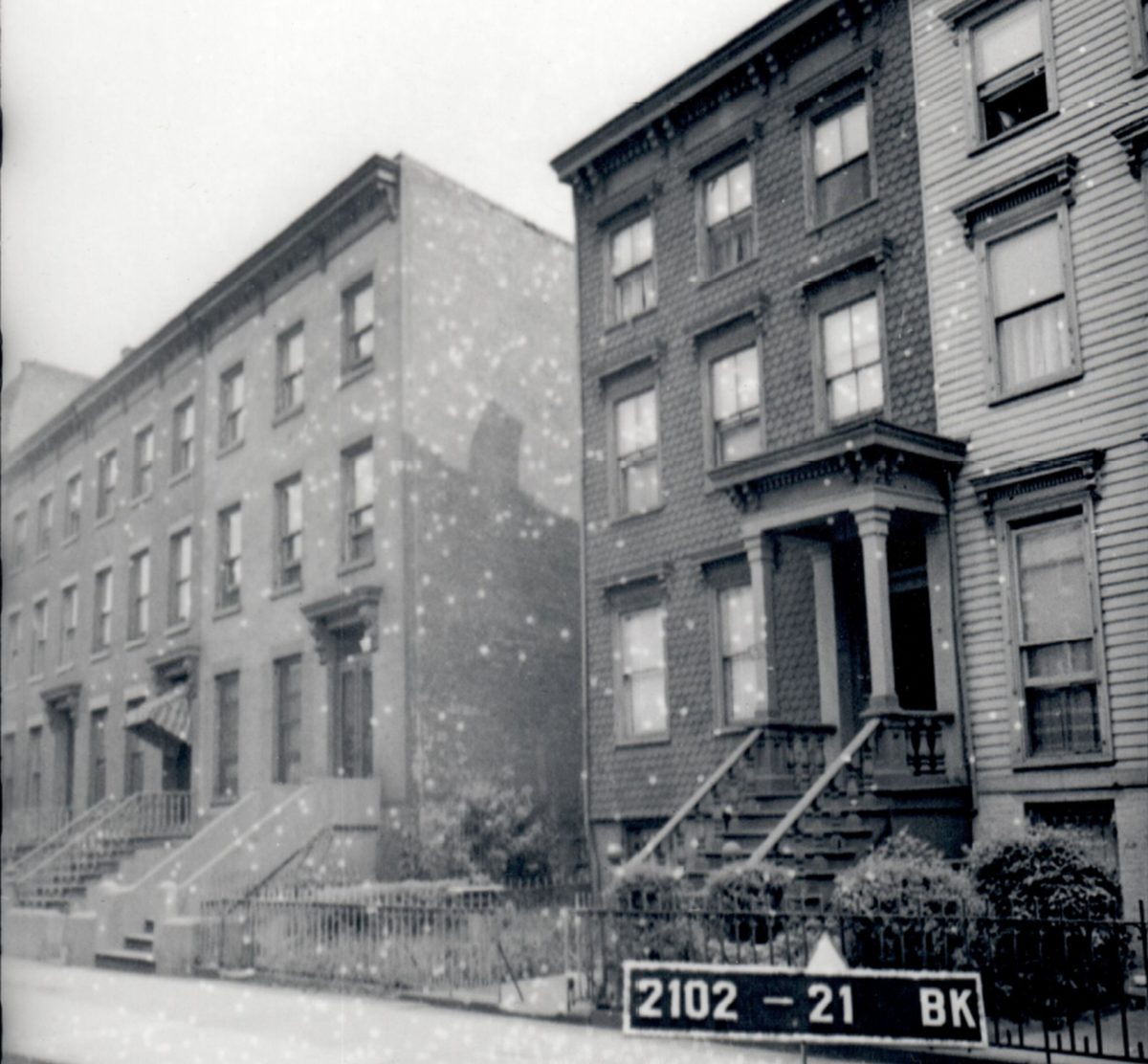
One of the Brownstone Detectives’ first House History Books, No. 231 Cumberland Street: The Story of a House, tells the story of an 1852 antebellum frame home just steps from Fort Greene Park. It’s an action-packed tome, replete with treachery, “poudrette,” “small art,” SROs, and the gangland figures from “Goodfellas.”
Here is a brief timeline of the history of this single landmarked property, matched up with “spreads” from the book:
THE HISTORY OF A BROOKLYN HOUSE
The land beneath which No. 231 would someday rise, started out as a tobacco farm owned by the first Italian immigrant to New York, Pietre Cesare Alberti. The farmland would eventually be built upon in 1851-2, when builder John Ross constructed a row of three homes there.
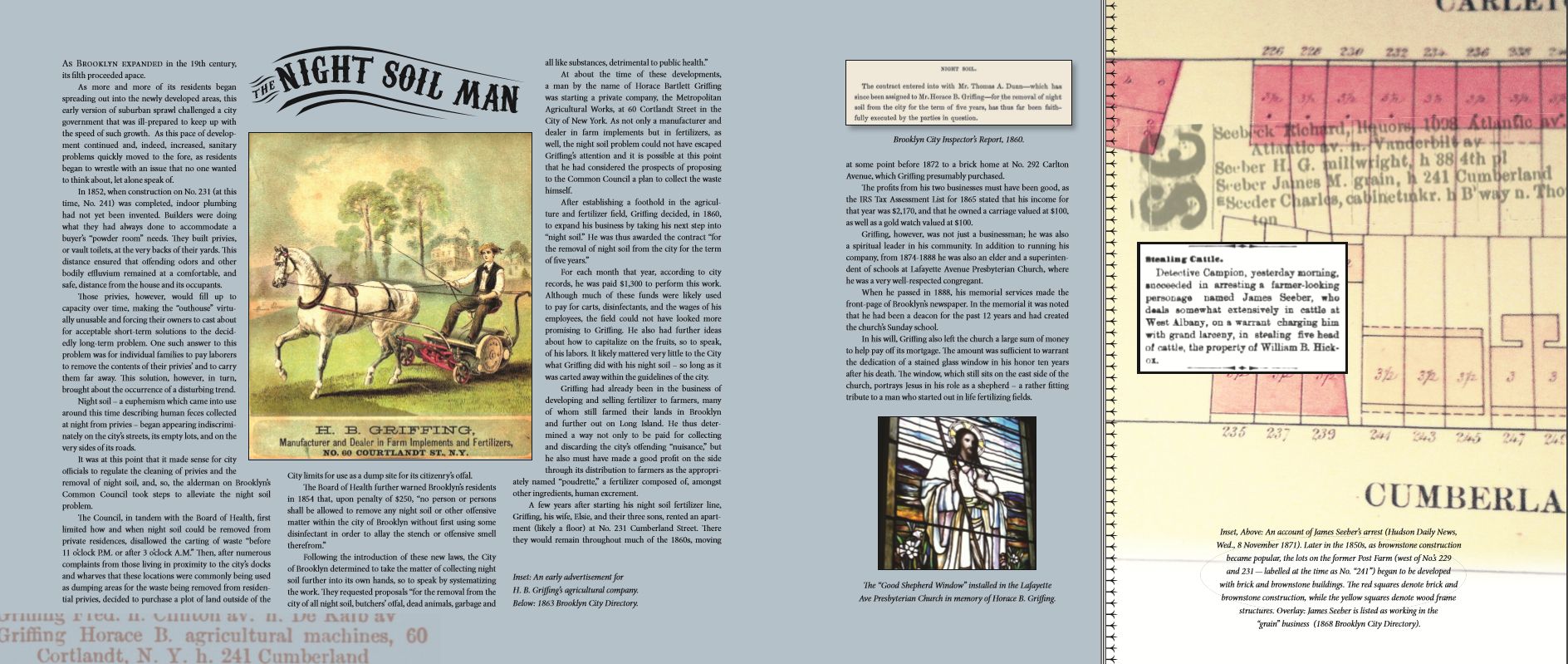
First owned by a woman with a tragic history, a melodrama involving treachery, another man, and an infant daughter – which became the gossip of the newspapers of the time – No. 231 was rented out throughout the the 1850s and 1860s, in addition to many returning Civil War veterans, to merchants and their small families.
One of those merchants featured prominently in the founding of the Lafayette Avenue Presbytery Church. Before this, however, he had begun his interesting career as a Night Soil Man – starting a company which, amongst other “agricultural” endeavors, collected human excrement from the backyard privvies of Brooklyn, selling this “compost” to Long Island farmers as the appropriately – if euphemistically – named “poudrette.”
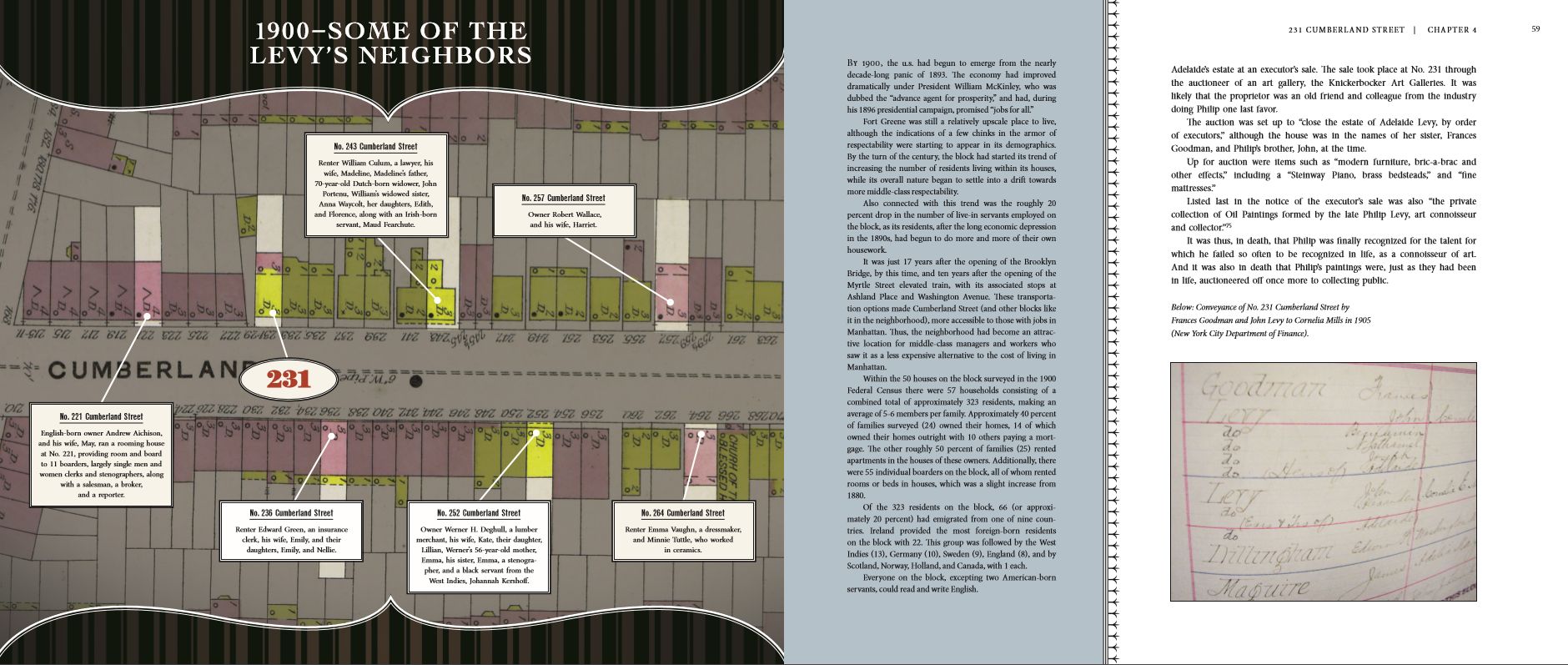
The property was then owned by an immigrant, Philip P. Levy, who became a leader in producing and selling within the “small art” field – those “potboiler” productions of art, distributed throughout the country as one-off, individual works of art, which were actually mass-produced by out-of-work artists. Although Levy became rich selling such art, he died in penury in 1905.
By the 1900s, like many other houses in the neighborhood, the home began to be used as a rooming house, followed many years later as a Single-Room Occupancy (SRO).
In the 1930s and ’40, the attorney for the Brooklyn Daily Eagle owned the house. He also represented a number of mob figures – but only in their legal dealings – such as “Big Paulie” Vario, who was figured prominently in the movie, “Goodfellas.”
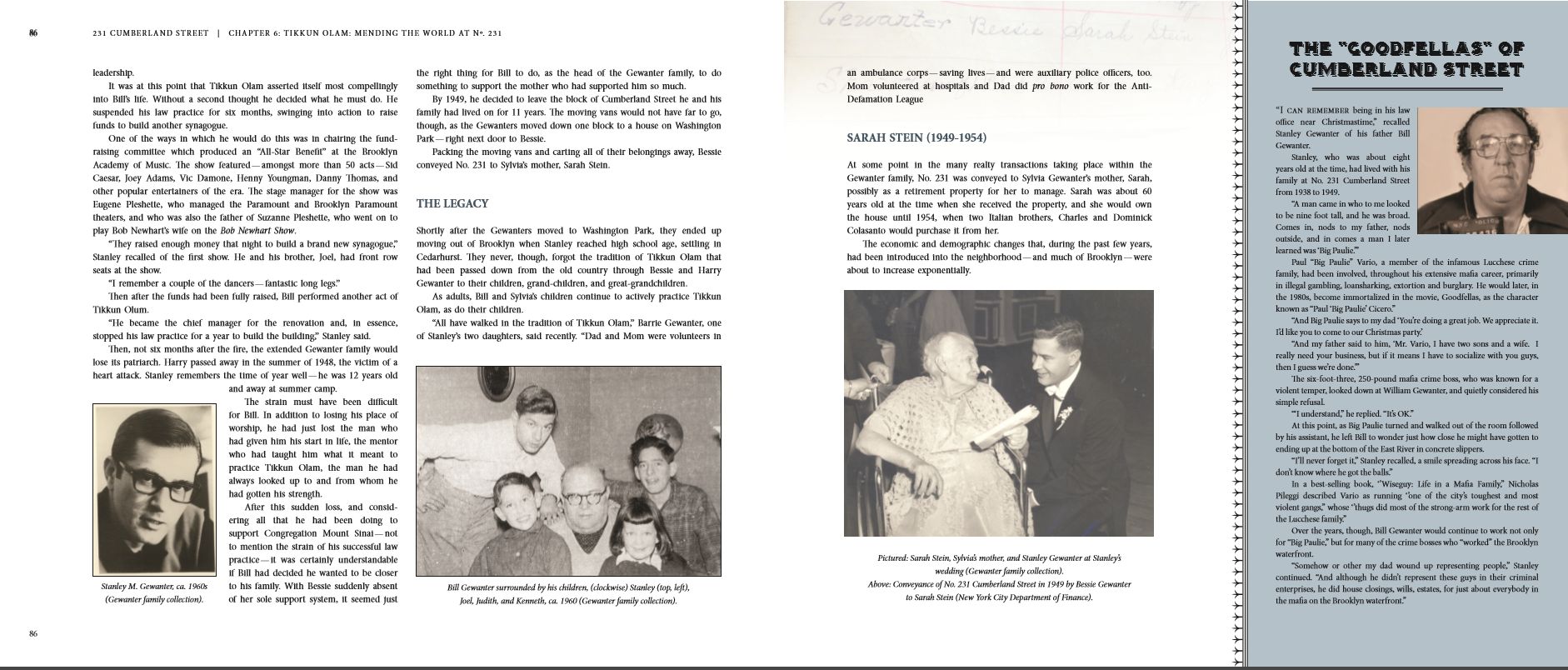
Run as an SRO for almost 70 years, the house fell into disrepair as various owners used the property primarily as an investment.
In 1971, however, Albert Corley, a WWII veteran who worked his way up from trundling racks of dresses in the fashion district in the 1950s to owning his production line, created a a dress design and manufacturing company with a grant from the Bedford-Stuyvesant Restoration Corporation. After successes in the industry, he moved away in the ’80s, conveying the house onto its next owner.
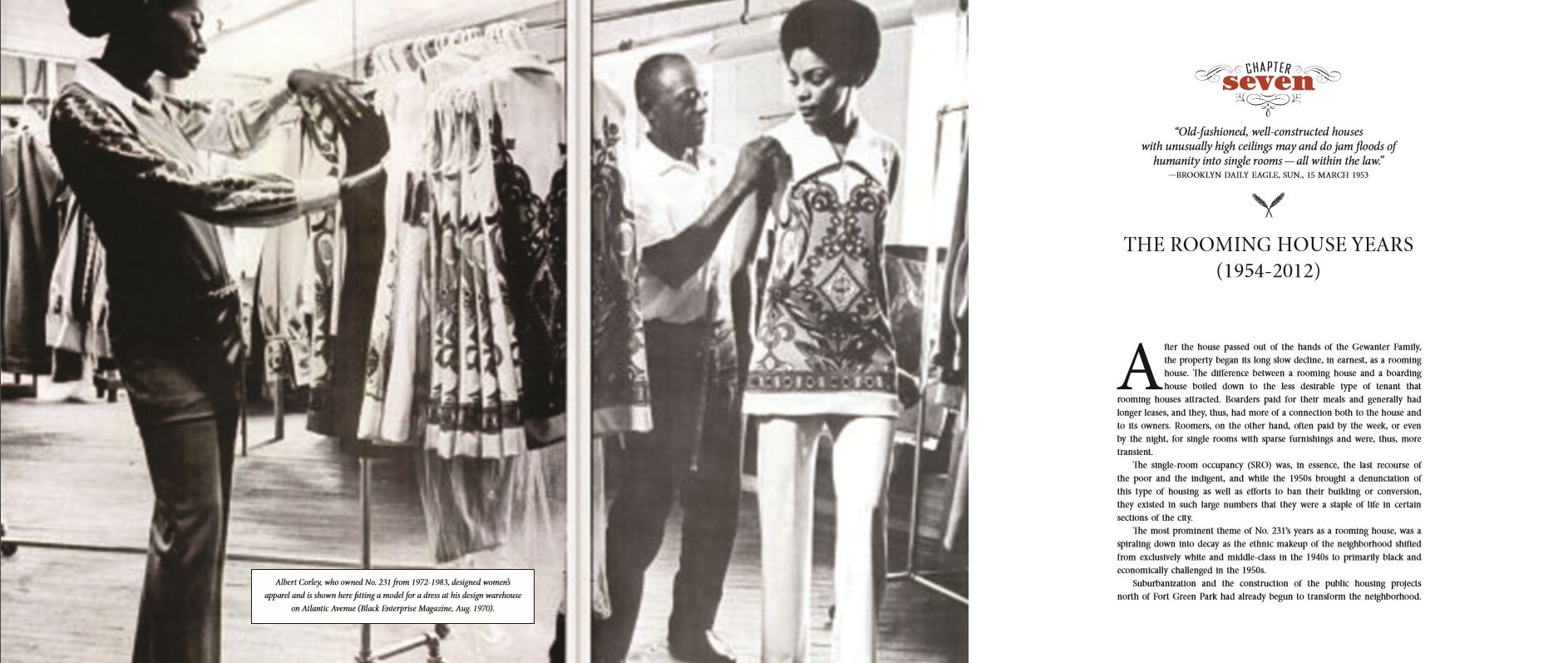
Finally, after the lion’s share of the house’s existence had been spent sliding less-than-graciously downhill, the current owners purchased the property and, working with nC2 Architecture and the New York City Landmarks Commission, invested in a top-tier renovation/restoration that has returned the home to its former glory.
———————————————————————————————————————–
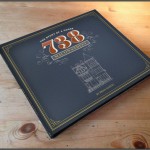 The story you have just read was composed from extensive historical research conducted by The Brownstone Detectives. Our clients commission us to investigate the history of their – or their clients’ – historic properties. From our findings, we produce their very own hardbound House History Books. Our books are professionally written and laid out, containing illustrated and colorful narratives that bring the history of any house to life. Contact us today to begin discovering the history of your home.
The story you have just read was composed from extensive historical research conducted by The Brownstone Detectives. Our clients commission us to investigate the history of their – or their clients’ – historic properties. From our findings, we produce their very own hardbound House History Books. Our books are professionally written and laid out, containing illustrated and colorful narratives that bring the history of any house to life. Contact us today to begin discovering the history of your home.